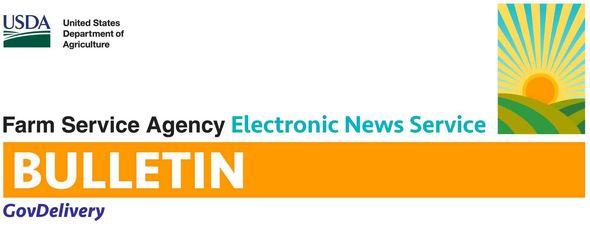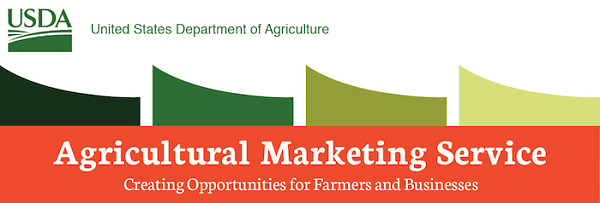Your stop for Clarke, Frederick, Page, Shenandoah, and Warren agriculture and natural resource education.

Wednesday, May 27, 2020
Harvesting High Quality Hay or Forages
Covid-19/Coronavirus Messaging Research Study and Survey – Recruitment Letter
|
Mary
Ann Friesen PhD, RN, CPHQ
Nursing
Research and Evidence Based Practice Coordinator
Inova
System Office
|
|
Shirley
B. Holland, VP
Planning
& Community Development
Carillion
Clinic
|
|
Kristin
I Miller
iTHRIV
Partnership Manager
University
of Virginia
|
|
Natalie
E. Cook, PhD
Assistant
Professor of Public Health
Virginia
Tech
|
Thursday, May 21, 2020
Collaborative Marketing-A Process; Not an Event
Tuesday, May 19, 2020
Equine Bio-security Basics
https://www.horsecouncil.org/wp-content/uploads/2020/03/biosecurity-basics_PATH-International.pdf
Farm Related Covid-19 Funding
|
$16 Billion Available to Help Farmers
Funds are from the Coronavirus Food
Assistance Program
(1).png) The Coronavirus Food Assistance
Program (CFAP) provides assistance to farmers and ranchers financially
impacted by the coronavirus pandemic. The USDA has yet to open the
applications for this money, but they have said to begin the process
ASAP if you are a farmer who has experienced a loss due to the coronavirus
pandemic. The Coronavirus Food Assistance
Program (CFAP) provides assistance to farmers and ranchers financially
impacted by the coronavirus pandemic. The USDA has yet to open the
applications for this money, but they have said to begin the process
ASAP if you are a farmer who has experienced a loss due to the coronavirus
pandemic.
Direct
support for farmers and ranchers available via CFAP will include:
All
farms are eligible for this assistance, regardless of size. This is
especially important for small farms, as they are less likely to have the
insurance necessary to help them float above this crisis.
The
USDA is already warning, however, that this assistance package will not be
enough to cover all losses to the US agriculture industry.
For
more information on how to prepare for this application, including a list of
all the forms you need, head to:
https://www.ncat.org/coronavirus-food-assistance-program/
Or,
you can check out the question of the week from ATTRA Sustainable
Agriculture:
https://attra.ncat.org/how-can-the-coronavirus-food-assistance-program-help-producers/
If
you need help contact us here at ATTRA, always ready to help.
Since 1976, the National
Center for Appropriate Technology (NCAT) has been helping people by
championing small-scale, local and sustainable solutions to reduce poverty,
promote healthy communities and protect natural resources. More information
about its programs and services is available at www.ncat.org or by calling
1-800-ASK-NCAT.
|
Friday, May 15, 2020
Wednesday, May 13, 2020
Webinar for Producers Interested in Applying for Direct Payments through the Coronavirus Food Assistance Program
|
Tuesday, May 12, 2020
USDA Announces Cooperative Agreements for Community Compost and Food Waste Reduction

WASHINGTON, May 11 –The U.S. Department of Agriculture (USDA) today announced the availability of $900,000 for local governments to host a Community Compost and Food Waste Reduction (CCFWR) pilot project for fiscal year (FY) 2020. The cooperative agreements will support projects that develop and test strategies for planning and implementing municipal compost plans and food waste reduction plans. The agreements are offered through USDA’s Office of Urban Agriculture and Innovative Production.
“Food waste shouldn’t end up in landfills when options like food recovery and composting are available,” Under Secretary for Farm Production and Conservation Bill Northey said. “Such options not only benefit communities and the environment, they can also provide farmers and urban gardeners with exceptional, nutrient dense planting material.”
“We are tapping into the creativity of communities across the nation to rethink the lifecycle of food in ways that minimize waste and maximize use.” said Under Secretary for Marketing and Regulatory Programs Greg Ibach. “We look forward to highlighting the innovative practices of selected pilot projects.”
Key Dates
USDA will accept applications on Grants.gov until midnight June 26, 2020. Projects should span two years with a start date of October 1, 2020 and completion date of September 29, 2022.
Details
Cooperative agreements support projects led by local governments that: 1) generate compost; 2) increase access to compost for agricultural producers; 3) reduce reliance on, and limit the use of, fertilizer; 4) improve soil quality; 5) encourage waste management and permaculture business development; 6) increase rainwater absorption; 7) reduce municipal food waste; and 8) divert food waste from landfills. USDA’s Natural Resources Conservation Service will provide assistance for conservation related activities.
Priority will be given to projects that anticipate or demonstrate economic benefits; incorporate plans to make compost easily accessible to farmers, including community gardeners; integrate other food waste strategies, including food recovery efforts; and collaborate with multiple partners.
Webinar
A webinar, which will be held on June 4, 2020, from 2 to 4 p.m. Eastern Daylight Time, will provide an overview of the cooperative agreements’ purpose, project types, eligibility and basic requirements for submitting an application. Information on how to register and participate in the webinar, or listen to the recording, will be posted at farmers.gov/urban.
More Information
Comments can be sent to UrbanAgriculture@usda.gov within 90 days, with the subject line “Community Compost and Food Waste Reduction Project.”
Questions about this cooperative agreement opportunity can be sent to UrbanAgriculture@usda.gov.
The Office of Urban Agriculture and Innovative Production was established through the 2018 Farm Bill. It includes representatives from many USDA agencies, including Farm Service Agency and Agricultural Marketing Service, and is led by the Natural Resources Conservation Service. Its mission is to encourage and promote urban, indoor, and other emerging agricultural practices, including community composting and food waste reduction. More information is available at farmers.gov/urban.
Additional resources that may be of interest to urban agriculture entities include AMS grants to improve domestic and international opportunities for U.S. growers and producers and FSA loans.
USDA is an equal opportunity provider, employer and lender.
Friday, May 8, 2020
Impacts of the COVID-19 Pandemic on U.S. and Virginia Farms and Agribusinesses
Thursday, May 7, 2020
Add Value to Your Cattle Through Pinkeye Control
Numerous physical factors:
- Breed
and age of the animal
- Stocking
density of cattle and areas providing shade
- Availability
of flies
- Cleanliness
of facilities
- Ultraviolet
(UV) light exposure
- Wind,
grasses (pollen), and dust
- Dry
pasture conditions
- Trouble with IBR or other respiratory issues
Clinical Signs
Treatment
- Treating
with antibiotic therapy, particularly long acting antibiotics (work with Vet)
- Fly
control
- Management
of environmental factors are the best methods of treatment
- Moving
cattle to a new pasture may help decrease fly pressure and create more space
between cattle.
- Eye
drops or ointments can be used for dairy operations or show animals where they
are routinely handled.
- Covering
the eye with a cloth patch
- Use
vaccines, available commercial or autogenous
- Control
flies. That is one of the most important factors. Insecticide-impregnated ear
tags in both ears have been shown to decrease the spread of disease
- Using
insecticide sprays, pour-ons, dusters and back oilers can be used
- Provide
shaded areas to help decrease the amount of the animal’s direct sun light
exposure.
- Mow
or cut tall grasses or weeds.
- Vaccinations
for infectious bovine rhinotracheitis (IBR) but not during a pinkeye outbreak
or storm.







